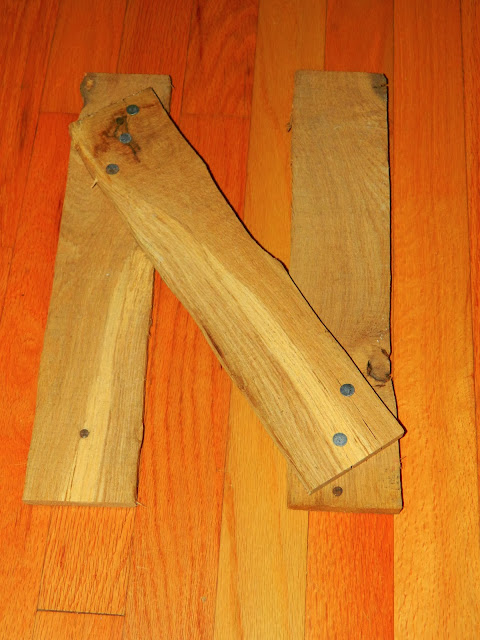Back in April my sister in law Johanna and I endeavored to make vanilla extract. It all started with finding vanilla beans at Christmas Tree Shop. I bought two jars of beans, each jar contained two beans (which I figured was plenty). We then began to read up on making vanilla and asked a few ladies we knew who had done it before and found that you need two vanilla beans for every 8 oz. of vodka. Johanna bought the smallest bottle of vodka she could find (that wasn't a singe serving) and it was 48 oz. - my four beans were nowhere near enough. So, back to Christmas Tree Shop I went to buy more vanilla beans, bringing our bean total to twelve.
I measured out 16 oz. of vodka into glass Mason Jars and added four vanilla beans to that, put the lid on the jars and put them on the pantry shelf in the basement to sit and soak. I pulled them out in November and they were a beautiful amber color and smelled so yummy (and taste great in cookies).
I saved all the glass bottles the beans had come in, used Goo Gone to remove the labels from the bottles and filled them back up with the finished vanilla to give away as gifts this Christmas. I put half a bean in each bottle - I thought it looked pretty!
I added labels to the jars before I gave them as gifts, just so people would know what it was. They were quite a hit with everyone I gave them to. I gave them to both my grandmothers (they already have everything they need, and they love to bake so I knew they would use it), they both loved it. I also did a jar for a Yankee Swap we attend, I added a bag of chocolate chips! Who doesn't want to make homemade chocolate chip cookies? It got swapped a few times and I was asked repeatedly how I made it.
The December issue of Martha Stewart Living had this idea for making Aromatic Extracts. Besides vanilla they did almond and lemon extract, I might have to try that next. That would make a pretty gift - three little bottles of extract?! In the article they only let their extract sit for three weeks, but it seems to me that the longer you left it the better flavor it would have.
As a side note I later found vanilla beans at Costco for a much better deal, they sell 10 beans for $12. But you don't get the cute little bottles with the beans like I did a Christmas Tree Shop.
How to make Vanilla:
You need -
* Vodka
* Vanilla Beans
Use two vanilla beans for every 8 oz. of Vodka. Allow to sit and soak for 2 to 6 months before using.
Enjoy!





















































